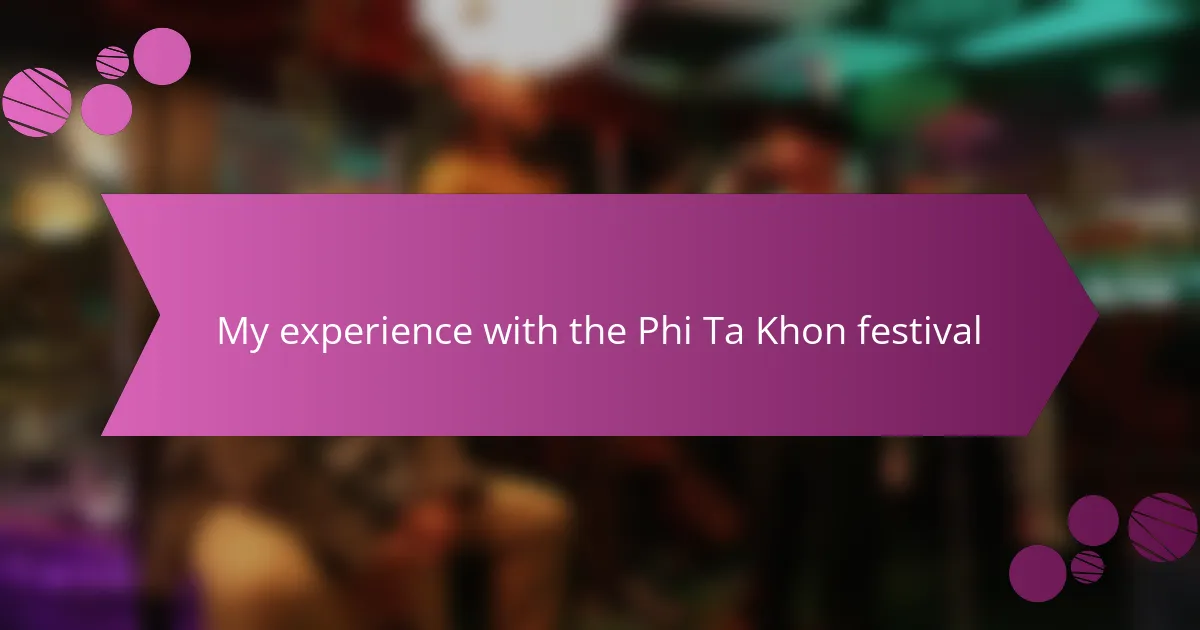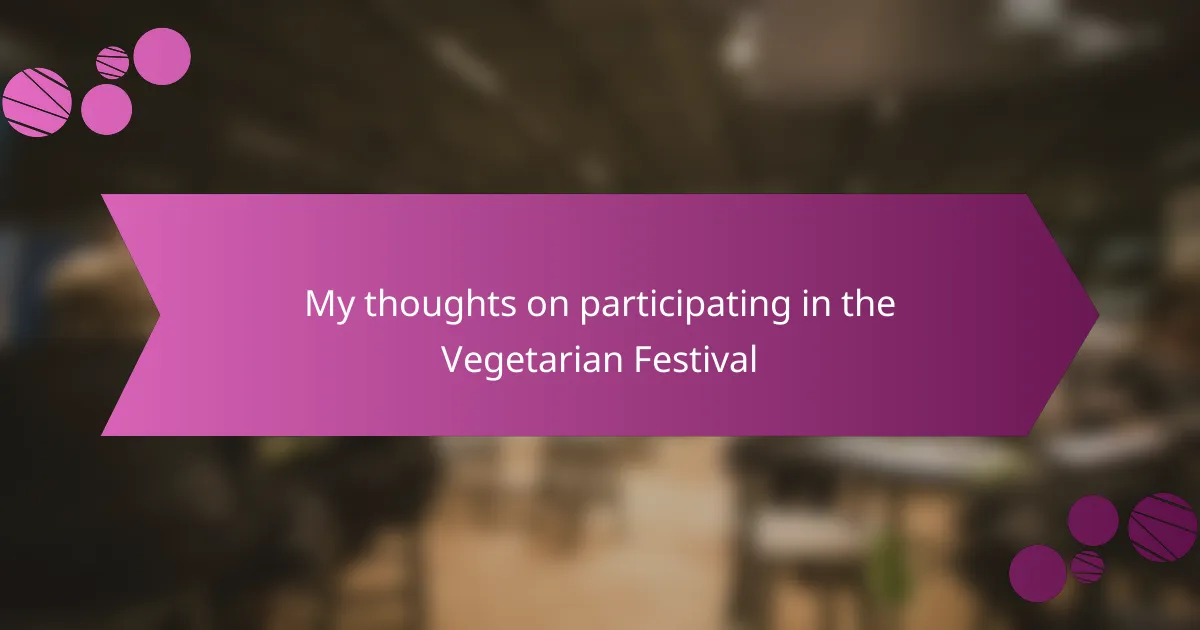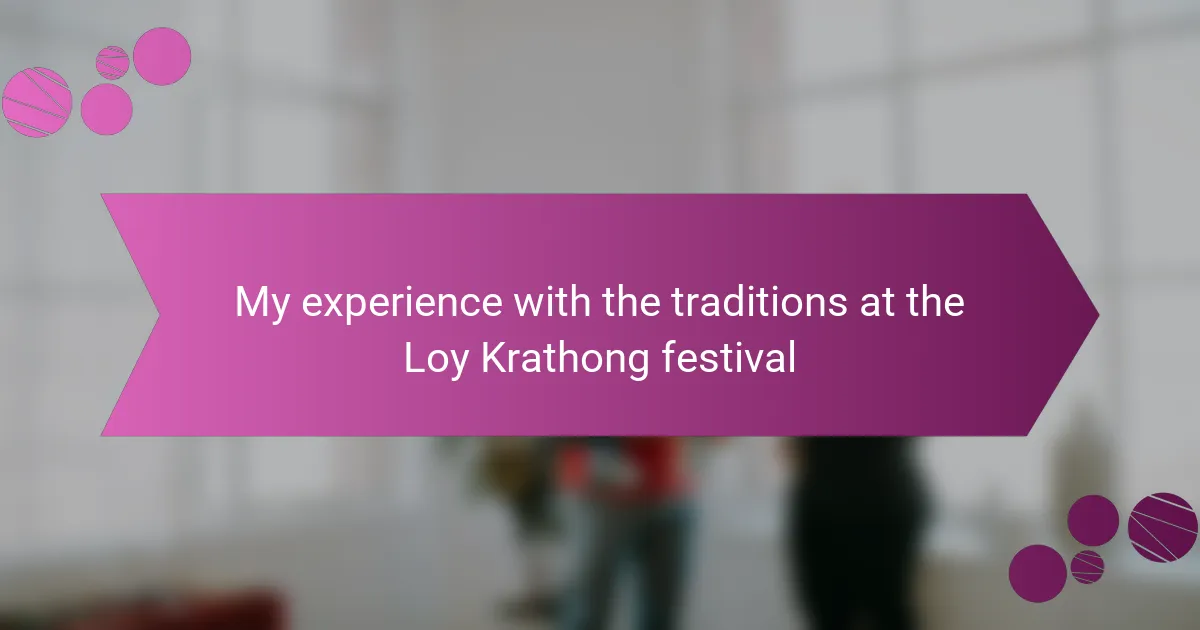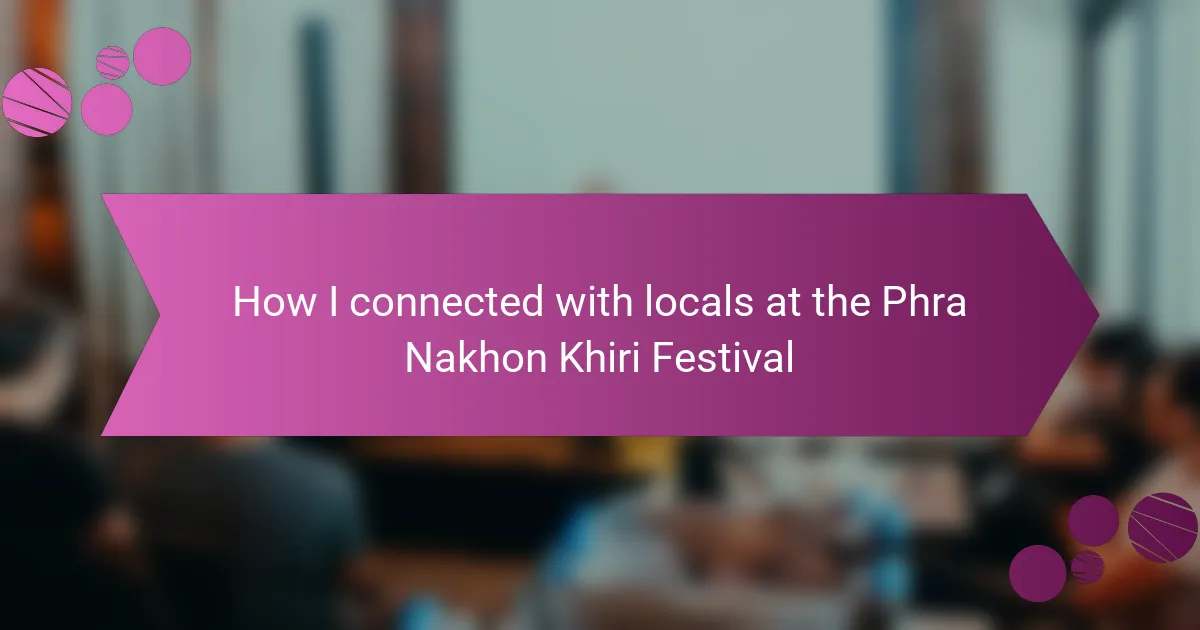Key takeaways
- Thai music festivals blend traditional and contemporary elements, fostering community spirit and cultural celebration.
- The Phi Ta Khon Festival showcases unique masks, vibrant costumes, traditional music, and emphasizes connections between the living and the spiritual.
- Preparing for festivals involves immersing in cultural traditions and creating personal connections through crafting and participation.
- Festival experiences are enriched by lively processions, traditional melodies, and local culinary delights, enhancing the sense of community and joy.
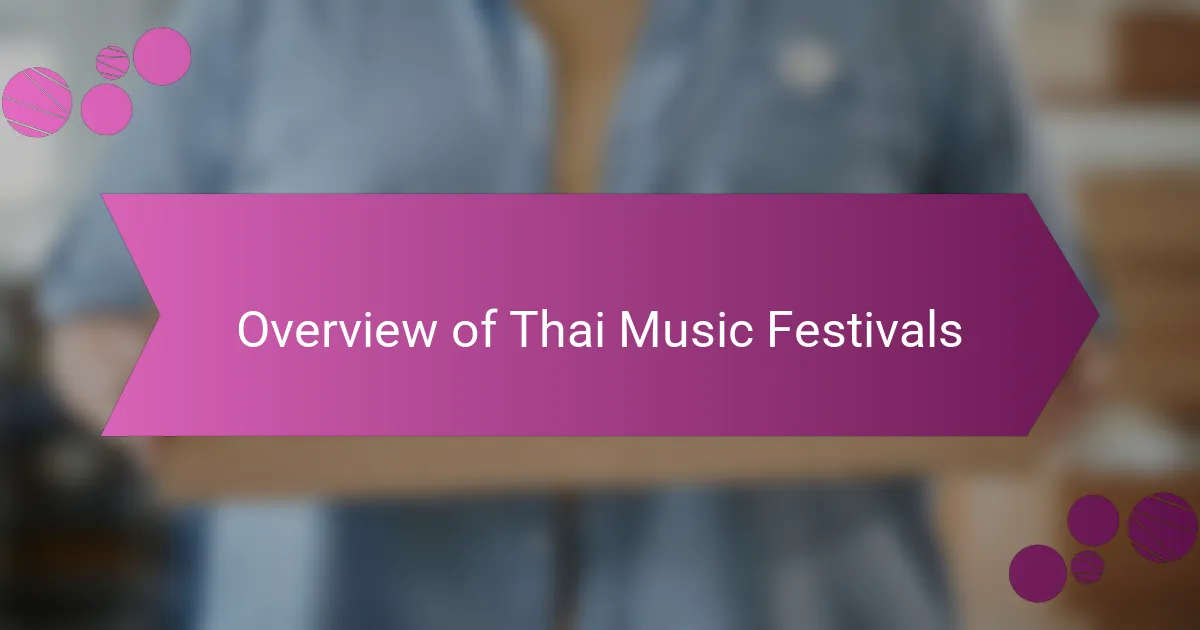
Overview of Thai music festivals
Thai music festivals are vibrant celebrations that showcase the rich cultural heritage of Thailand. Each event brings together a unique mix of traditional and contemporary music, creating an electrifying atmosphere. I vividly remember my first experience at one of these festivals; the energy in the air, the colorful attire, and the blend of sounds left an indelible mark on my heart.
One of the most captivating aspects of Thai music festivals is the way they foster community spirit. Attendees come together to celebrate not just music but also shared traditions and joy. It’s a moment where everything feels connected, and you’re surrounded by the rhythm of life. Here’s a list of notable Thai music festivals that capture this essence:
- Songkran Festival: Celebrated in April, this water festival features lively music and dance.
- Loy Krathong: Known as the Festival of Lights, it includes traditional songs and performances.
- Phi Ta Khon Festival: A unique event combining music, dance, and colorful masks in a spiritual celebration.
- Chiang Mai Flower Festival: A showcase of floral beauty accompanied by engaging musical performances.
Every time I think back to these festivals, I can almost hear the melodies echoing and feel the warmth of the people around me.
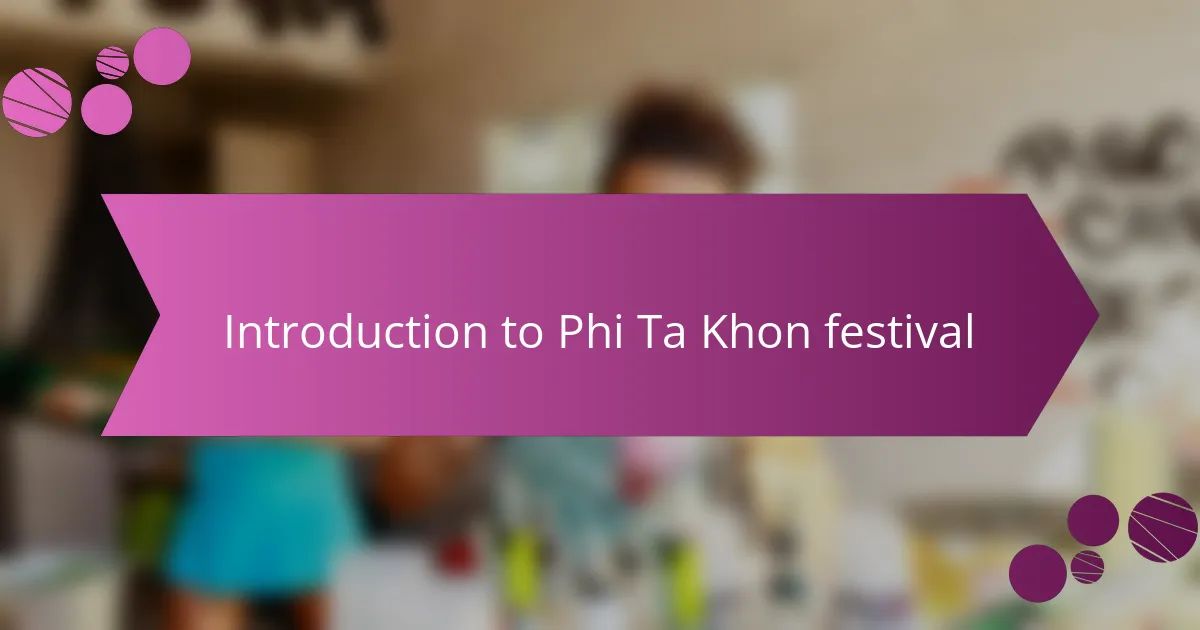
Introduction to Phi Ta Khon festival
The Phi Ta Khon Festival, often referred to as the Ghost Festival, is a mesmerizing blend of traditional celebration and cultural storytelling. In my experience, arriving at the festival, the sight of whimsical masks and vibrant costumes immediately draws you in. Each mask is unique, representing spirits and folklore that have been woven into Thai culture for generations.
As I walked through the streets filled with laughter and music, I was struck by the joyful spirit that permeated the air. It’s not just about the visual spectacle; it’s about connecting with the deeper stories of the community. Have you ever felt that electric excitement when participating in a festival that honors local customs? I certainly did, as the rhythmic beats of the traditional northeastern music reverberated through my chest, inviting me to dance along with everyone.
What truly makes Phi Ta Khon special is the sense of unity it fosters among attendees. You can see families and friends bonding as they share in the playful festivities, from lively processions to spirited games. Reflecting on my time there, it was more than just an event—it was a reminder of how culture can bring people together in the most joyous of ways.
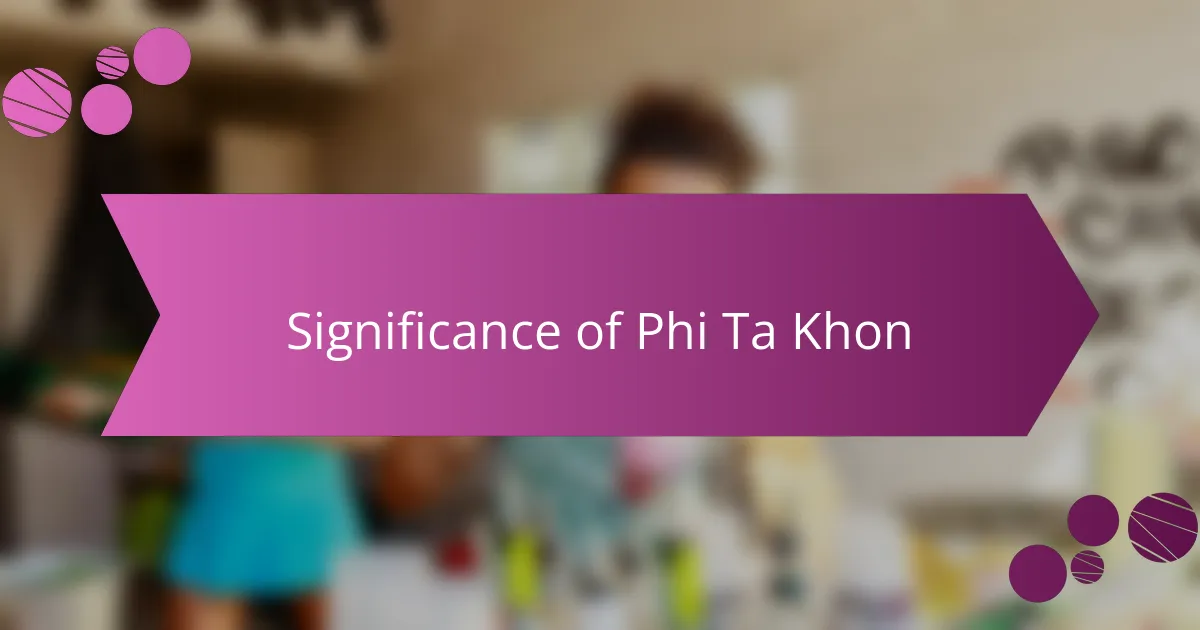
Significance of Phi Ta Khon
The Phi Ta Khon festival holds deep cultural significance in Thai society, particularly among the people of Dan Sai in Loei Province. It’s a vibrant blend of Buddhist traditions and local folklore, primarily celebrating the return of the departed spirits. I remember standing amid the colorful crowds, feeling the joyous spirit around me, as the locals dressed in their intricate ghost masks shared stories of the festival’s history. It struck me how this event emphasizes connections between the living and the deceased, showcasing a respect for ancestors that is deeply rooted in Thai culture.
Beyond its cultural roots, the festival serves a vital role in community bonding and expression. Participants come together in an elaborate display of creativity and storytelling, further fostering ties with their heritage and each other. Reflecting on my experience, the laughter and excitement were contagious, as even tourists like myself were swept up in the festivities. It felt like a reminder of the importance of community and celebration in our lives today.
- Celebrates the return of spirits, merging Buddhist beliefs with local legends.
- Fosters a strong sense of community and belonging among participants.
- Provides a platform for creative expression through colorful costumes and performances.
- Reinforces respect for ancestors and cultural heritage.
- Attracts both locals and tourists, promoting cultural exchange.
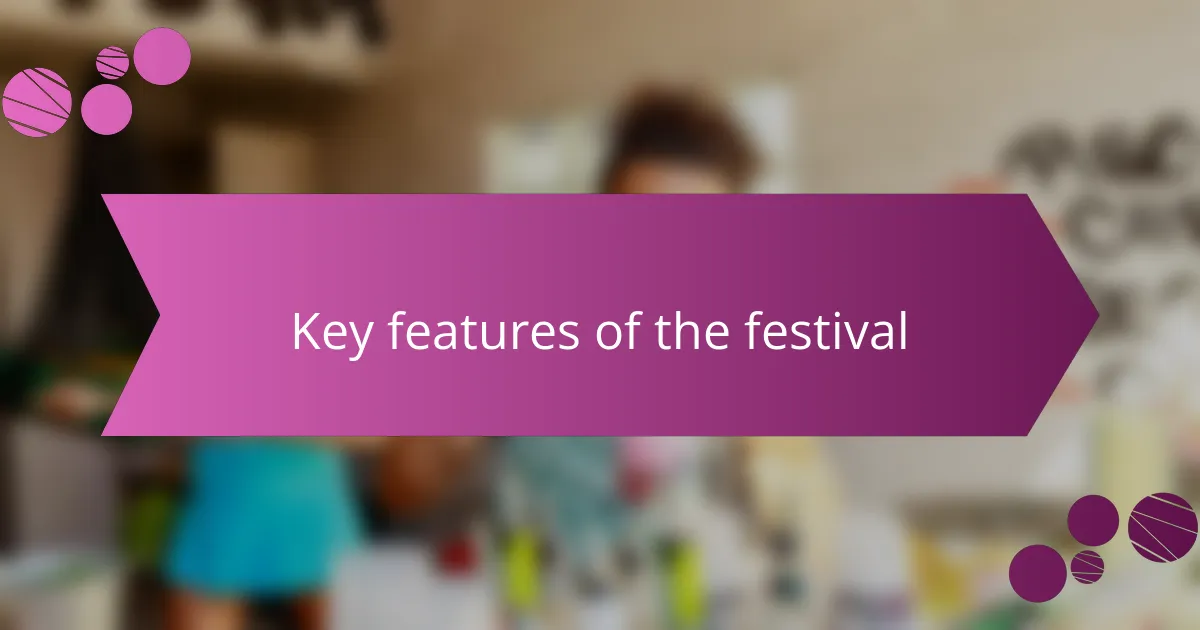
Key features of the festival
The Phi Ta Khon Festival is vibrant and alive with rich cultural significance. From the moment I stepped into the festival grounds, I was captivated by the colorful masks and costumes worn by participants, symbolizing the spirits of the dead. The joyful atmosphere, combined with traditional music and dance, created an environment of celebration and remembrance that truly resonated with me.
One key feature of the festival is its unique blend of fun and meaning. I remember being entranced by the lively parades where locals danced through the streets, shaking their bells to ward off evil spirits. Each procession felt like a journey through time, connecting the past with the present in such a heartfelt way.
Another highlight is the traditional music that accompanies the event. The combination of folk melodies and modern beats mirrors the festival’s ability to embrace both tradition and innovation. I found myself lost in the rhythm, feeling a profound sense of community as everyone around me united in song and dance.
| Feature | Description |
|---|---|
| Colorful Masks | Symbolizes spirits, made from various materials. |
| Traditional Music | Mix of folk and contemporary styles, enhancing the festive atmosphere. |
| Parades | Joyous celebrations merging cultural history with fun. |
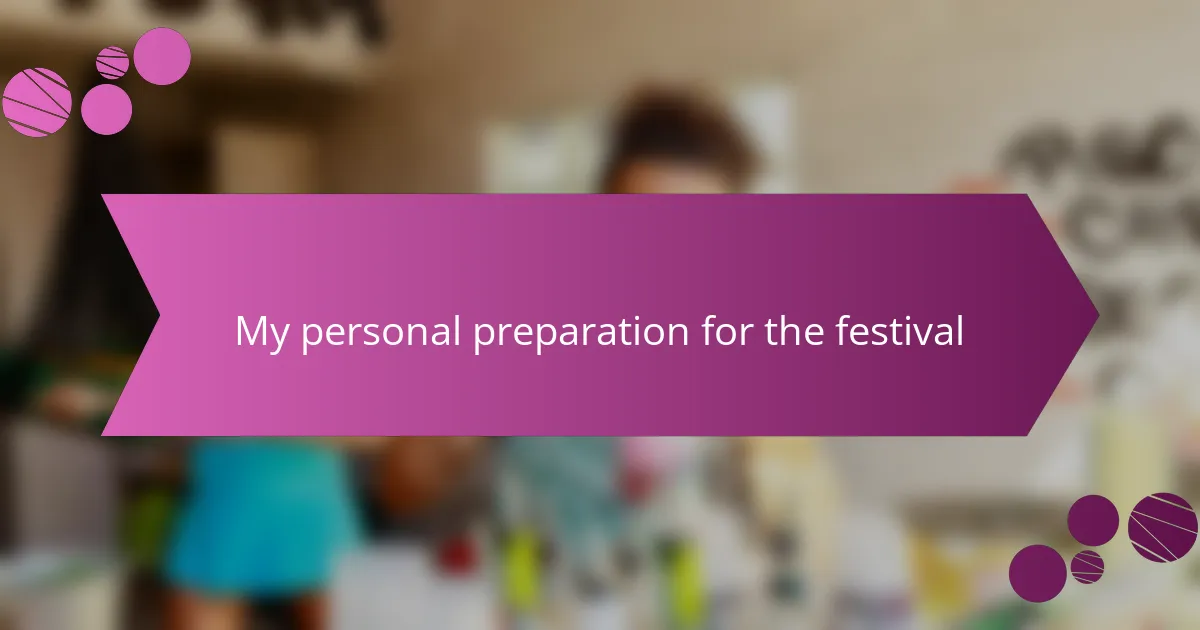
My personal preparation for the festival
Preparing for the Phi Ta Khon festival was an exhilarating experience for me. I spent weeks getting ready, diving into the rich traditions of the event. I remember the moment I stumbled upon a local shop selling vibrant masks and costumes; I felt a rush of excitement as I chose my outfit, realizing that dressing up was as much about embracing the spirit of the festival as it was about standing out in the crowd.
Here’s a quick list of what I did to prepare for the festival:
- Researched the festival’s history and meaning to appreciate its cultural significance.
- Joined a local crafting workshop to create my own mask, which added a personal touch.
- Practiced my dance moves and songs associated with the event to join in the festivities fully.
- Gathered supplies like water and snacks for the day, ensuring I was ready for a long, fun-filled celebration.
- Made plans with friends to attend together, emphasizing the communal aspect of the festival.
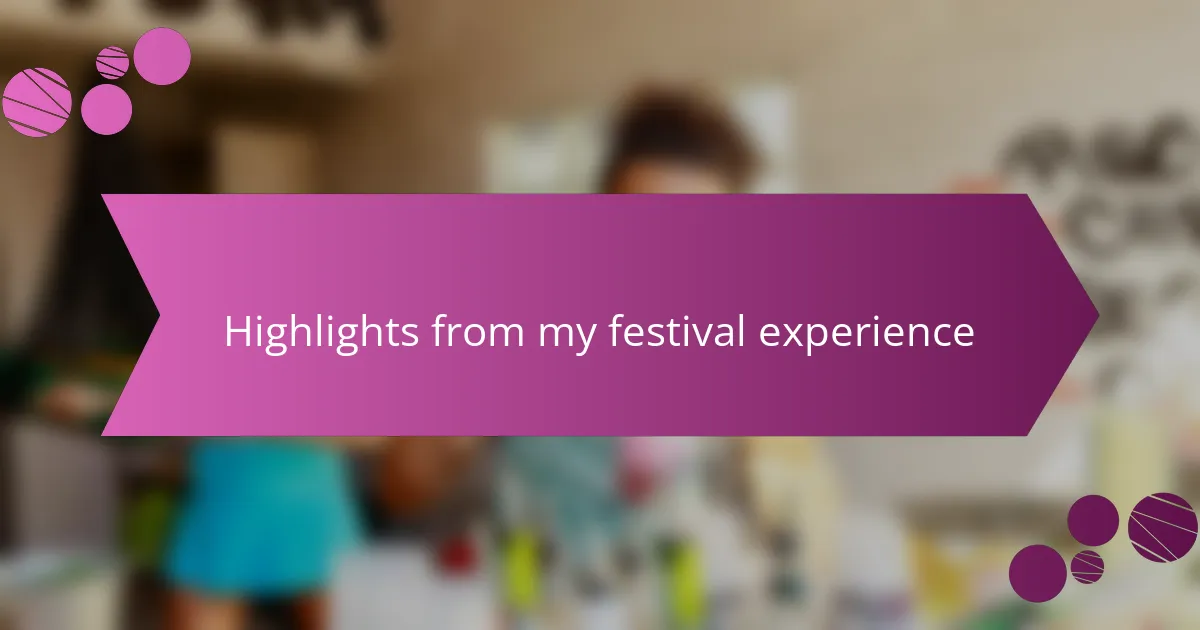
Highlights from my festival experience
During the Phi Ta Khon festival, the vibrant energy is simply infectious. I vividly recall walking through the colorful crowds, all adorned in unique, handmade masks. It felt like stepping into a dream where tradition and creativity collide—a true celebration of life and culture!
One of my favorite moments was witnessing the lively procession. The sounds of traditional music mingling with laughter created a soundtrack for the event that I can still hear in my mind. The joy and excitement in the air made every moment feel special, reinforcing the bond between the community and its rich culture.
Another highlight was the delicious street food available throughout the festival. Tasting local delicacies while surrounded by other festival-goers was a sensory delight. Each bite was a reminder of the local flavors, further immersing me in the experience.
| Experience | Details |
|---|---|
| Colorful Procession | Lively parades with handmade masks and traditional costumes. |
| Traditional Music | Blend of folk tunes that heighten the festive atmosphere. |
| Street Food | Delicious local dishes that characterize the region’s culinary flavors. |
